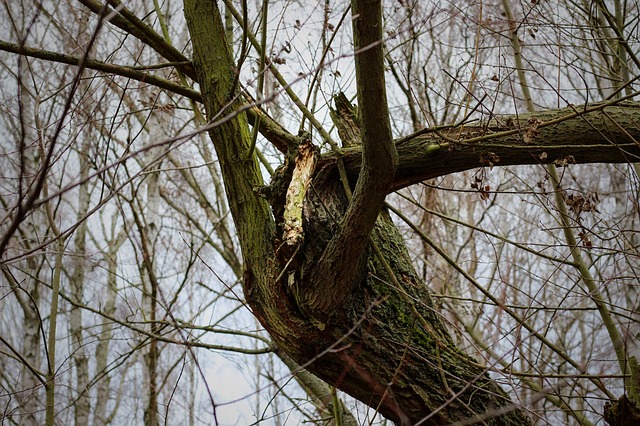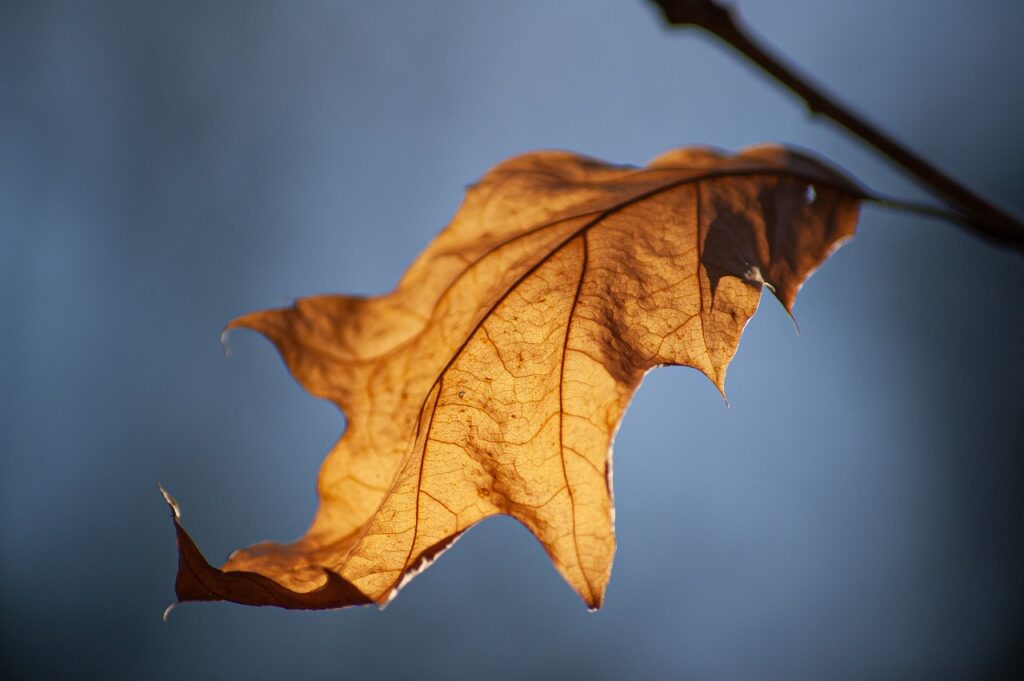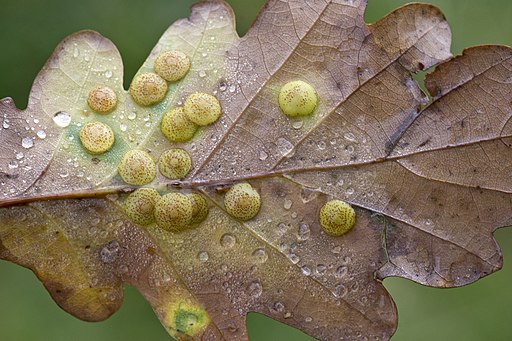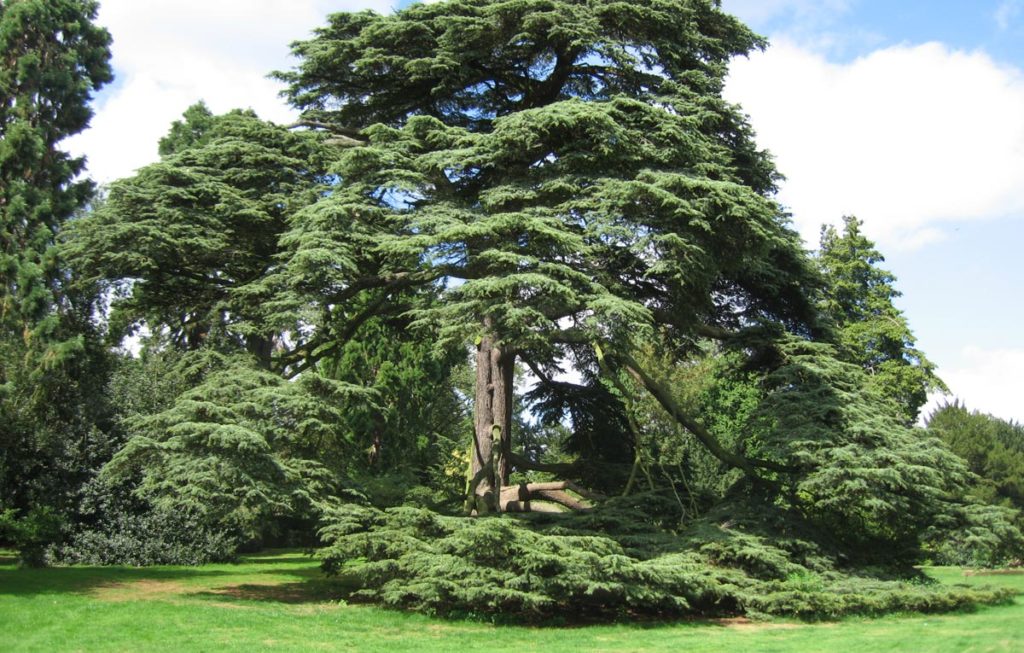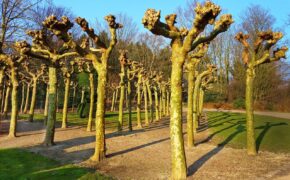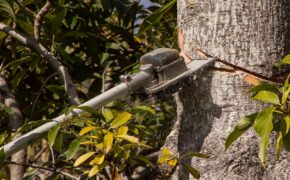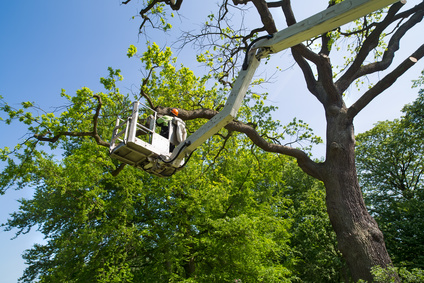
Get a quick no obligation quote It’s free and will only take a jiffy!
Top 10 Signs Your Tree Needs Professional Care
Trees are generally low-maintenance, but that doesn’t mean they never need attention. Like anything in your garden, trees can suffer from age, disease, pests, or structural problems. The trouble is that it’s not always easy to spot when something’s wrong — until it becomes a hazard.
Whether it’s dead branches, leaning trunks or unusual changes in the leaves, there are a number of tell-tale signs that your tree could be in need of professional care. In this blog, we’ve put together a simple checklist to help you identify when it’s time to call in a qualified tree surgeon.
1. Dead or dying branches
One of the most obvious signs that a tree needs attention is the presence of dead or dying branches. These branches often appear brittle, dry, and leafless – even during the growing season. In some cases, they may snap easily or hang loosely from the tree.
Deadwood isn’t just unsightly – it can be dangerous. In high winds or storms, these weakened limbs are far more likely to fall, posing a risk to people, property, and the tree itself.
If your tree has multiple dead branches or areas of dieback, it’s worth having it professionally assessed. A tree surgeon can safely remove the affected limbs with a dead wood pruning service, and advise on whether there’s an underlying issue that needs addressing.
2. Cracks in the trunk or major limbs
While some trees naturally develop shallow surface cracks as they age, deep or widening cracks in the trunk or main limbs can be a sign of serious structural weakness. These splits may be caused by storm damage, rapid growth, or internal decay, and they can seriously compromise the stability of the tree.
If you notice large cracks, especially those that extend deep into the wood or are accompanied by oozing sap or fungal growth, it’s time to call in a professional. Left unchecked, a cracked tree could be at risk of splitting or collapsing, especially during high winds or heavy rain.
3. Leaf discolouration or early leaf drop
If your tree’s leaves are turning yellow, brown or falling earlier than usual, it could be a sign that something’s not right. Discolouration, spotting, curling or premature leaf drop often points to issues such as nutrient deficiency, root damage, drought stress or even disease.
Different species show different symptoms, so it helps to know what’s normal for your tree. For example, ash trees affected by ash dieback may show blackened, wilting leaves and thinning crowns, while horse chestnuts might show blotchy browning caused by leaf miner moths.
If your tree’s foliage looks off-colour or is dropping long before autumn, it’s worth having it checked by a professional tree surgeon to rule out more serious problems.
4. Fungal growth around the base
Spotting mushrooms or fungal bodies around the base of a tree might not seem like a big deal at first – but it can be a red flag. Certain fungi, like honey fungus (Armillaria), feed on the roots and lower trunk, leading to root rot and internal decay that weakens the tree from the ground up.
You might notice clusters of yellow-brown mushrooms in late summer or autumn, or white mycelium (a sort of fungal “netting”) beneath the bark or in the soil. Other types of bracket fungi growing from the trunk or roots can also be signs of rot and structural instability.
If you spot fungi near your tree, it’s wise to get it assessed. Some types can be managed if caught early, but others may require more serious intervention.
5. Leaning or unstable trees
A slight lean is often nothing to worry about, especially if it’s developed gradually and the tree is growing steadily. But if your tree starts to lean suddenly, or you notice it shifting more over time, it could be a sign of root instability or structural failure.
Signs to look out for include:
- Exposed roots or soil lifting on one side of the base
- Cracks in the ground around the trunk
- A noticeable tilt that wasn’t there before
Trees that are leaning towards buildings, footpaths or roads should always be checked by a professional. In some cases, the lean can be corrected with cabling or bracing. But if the root system has failed, removal may be the safest option.
6. Excessive deadwood or crown dieback
It’s natural for trees to shed the odd twig or small branch, but if you notice significant dieback in the crown (the upper canopy) it could point to an underlying problem.
A thinning crown, lots of dead twigs or branches that fail to leaf in spring may all be signs of disease, decay, or poor root health.
Crown dieback is often gradual, so it’s easy to overlook until it becomes severe. Regularly looking up into your tree’s canopy can help you catch early signs.
If large sections appear lifeless or bare, it’s time to have the tree examined. A professional tree surgeon can identify the cause and recommend the best course of action, whether that’s pruning, treatment or tree removal.
7. Pest infestations
Insects are a natural part of a tree’s ecosystem, but some pests can cause real damage if left unchecked. Signs of pest infestation include holes in the bark, sawdust-like residue (known as frass), sticky sap, or visible clusters of insects on leaves and stems.
In the UK, common culprits include:
- Aphids, which leave behind a sticky residue called honeydew
- Oak processionary moth caterpillars, which can strip foliage and pose health risks
- Leaf miners, which cause discolouration and blotchy patches on leaves
- Bark beetles, which can bore into weakened trees and spread disease
Pest issues often go hand in hand with other problems like drought stress or disease, so it’s best to deal with them early. A professional tree surgeon can identify the pest and advise whether treatment is necessary.
You might also notice unusual growths or swellings on leaves or branches, known as galls. These are caused by insects, mites, or fungi, and while they’re usually harmless, they can sometimes be a sign that your tree is under stress.
We’ve covered this in more detail in our blog: What Are These Growths on My Tree? Galls Explained.
8. Root damage or uplift
A tree’s health starts below ground, so it’s worth keeping an eye on what’s happening around the base. Exposed or damaged roots, or areas where the soil appears lifted or disturbed, could be signs of trouble.
Root damage is often caused by:
- Nearby construction or landscaping work
- Heavy footfall or vehicles compacting the soil
- Erosion from heavy rain or flooding
- Animals digging or disturbing the area
When roots are damaged, the tree may lose its ability to take up water and nutrients—or worse, it could become unstable. You might also notice a sudden lean or stress showing in the leaves and branches. A tree surgeon can assess root health and recommend whether the tree can recover or needs more support.
9. Tree interfering with property or utilities
Sometimes, a tree doesn’t need to be unhealthy to cause a problem. If it’s growing too close to buildings, fences, power lines, or underground services, it could pose a risk simply due to its size or location.
Signs to look for include:
- Branches brushing against roofs, gutters or windows
- Roots lifting paving, driveways or foundations
- Growth into overhead cables or blocking visibility near roads or driveways
Even healthy trees can become hazardous if they’re in the wrong place. A professional tree surgeon can trim back problematic growth safely and advise whether long-term management or even removal is the best option.
10. A tree that’s simply outgrown its space
Sometimes a tree is perfectly healthy, but it’s just too big for the space it’s in. What started as a manageable sapling can, over time, grow into a tree that dominates your garden, blocks light, or causes disputes with neighbours.
You might notice:
- Overcrowding with other plants or trees
- Excessive shading of your home or garden
- Overhanging branches becoming difficult to manage
Rather than letting the problem grow – literally – it’s best to get professional advice. In many cases, a tree surgeon can carry out crown reduction or crown thinning to make the tree more manageable, preserving its health while keeping it in proportion with its surroundings.
Does your tree need professional care? Don’t ignore the warning signs.
Trees are incredibly resilient, but they do need a helping hand from time to time, especially when signs of stress, damage or disease start to show. By spotting problems early, you can prevent small issues from turning into costly or dangerous situations.
If you’ve noticed any of the signs we’ve covered, whether it’s dead branches, unusual growths, leaning trunks or signs of pests, it’s best to get a professional opinion.
At TH Trees Ltd, our qualified tree surgeons are on hand to assess your tree’s condition and recommend the right solution, from pruning and treatment to safe removal if needed.
Contact TH Trees Ltd today for expert advice and reliable, professional tree care across Essex and the surrounding areas.
Had a fallen tree in the early hours of Monday morning, called for quote and the team had it cleared on the same day. Really good communication when the lads were onsite and did a great job. Lots of pride in their work shown with the thorough clear up. Would thoroughly recommend.
Thank you Stuart for your kind review. We were glad to be able to help you with your fallen tree. If there's anything else you need in the future, please don't hesitate to get in touch.

